Showing Spotlights 137 - 144 of 336 in category All (newest first):
 Carbon nanomaterials, including graphene-based materials, are widely gaining popularity in practical applications of nanomanufacturing. As a result, it becomes more and more likely that the unwanted introduction of such materials into the environment may occur. In particular, aqueous habitats might be severely affected by any accidental carbon nanomaterials exposure. Researching these potential environmental toxicity effects, scientists have found that kaolin, a cheap and abundant clay, can act as a powerful antidote to remediate the toxic effects of graphene oxide.
Carbon nanomaterials, including graphene-based materials, are widely gaining popularity in practical applications of nanomanufacturing. As a result, it becomes more and more likely that the unwanted introduction of such materials into the environment may occur. In particular, aqueous habitats might be severely affected by any accidental carbon nanomaterials exposure. Researching these potential environmental toxicity effects, scientists have found that kaolin, a cheap and abundant clay, can act as a powerful antidote to remediate the toxic effects of graphene oxide.
Apr 25th, 2018
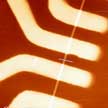 The advent of graphene resulted in a massive, world-wide, effort directed at investigation of other two-dimensional (2D) layered materials. One-dimensional (1D) bundled materials have received considerably less attention. Similar to the 2D layered materials with covalently bonded layers separated by the van der Waals gaps, the 1D materials consist of covalently bonded one-dimensional wires with van der Waals gaps between the wires. Researchers now have discovered that quasi-1D nanoribbons reveal an exceptionally high current density at the peak of the stressing DC current. This level of the current density exceeds that in any conventional metals like copper by almost two orders of magnitude.
The advent of graphene resulted in a massive, world-wide, effort directed at investigation of other two-dimensional (2D) layered materials. One-dimensional (1D) bundled materials have received considerably less attention. Similar to the 2D layered materials with covalently bonded layers separated by the van der Waals gaps, the 1D materials consist of covalently bonded one-dimensional wires with van der Waals gaps between the wires. Researchers now have discovered that quasi-1D nanoribbons reveal an exceptionally high current density at the peak of the stressing DC current. This level of the current density exceeds that in any conventional metals like copper by almost two orders of magnitude.
Apr 19th, 2018
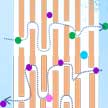 As a promising large-scale energy storage technology, redox flow batteries (RFBs) are attracting increasingly more research attention. For RFB separators, the essential requirement is achieving high ionic conductivity with minimal cross-over at low cost. Researchers now have demonstrated a proof-of-concept graphene oxide (GO) membrane as separator for large-scale energy RFBs. Their work shows that the two-dimensional nanochannel structure and low frictional water flow inside micrometer-thick GO laminates make this material an attractive candidate membrane for large-scale energy storage systems.
As a promising large-scale energy storage technology, redox flow batteries (RFBs) are attracting increasingly more research attention. For RFB separators, the essential requirement is achieving high ionic conductivity with minimal cross-over at low cost. Researchers now have demonstrated a proof-of-concept graphene oxide (GO) membrane as separator for large-scale energy RFBs. Their work shows that the two-dimensional nanochannel structure and low frictional water flow inside micrometer-thick GO laminates make this material an attractive candidate membrane for large-scale energy storage systems.
Apr 17th, 2018
 For most viscous liquids, the solid surface of surrounding channel walls poses friction resistance to the flowing liquid, causing a loss of velocity at the liquid/solid interface. As a result, for regular surfaces the energy required for nanofluidic applications is enormous because of the tremendous hydraulic resistance inside nanoscale conduits. A new technique to accurately measure the hydraulic resistance inside graphene nanofluidic channels makes increasing the efficiencies of most nanofluidic applications possible.
For most viscous liquids, the solid surface of surrounding channel walls poses friction resistance to the flowing liquid, causing a loss of velocity at the liquid/solid interface. As a result, for regular surfaces the energy required for nanofluidic applications is enormous because of the tremendous hydraulic resistance inside nanoscale conduits. A new technique to accurately measure the hydraulic resistance inside graphene nanofluidic channels makes increasing the efficiencies of most nanofluidic applications possible.
Mar 28th, 2018
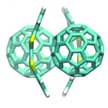 In new work employing the photostrictive effect, researchers have fabricated a flexible two-dimensional (2D) charge transfer molecular (sub-nanometer) nanosheet and observed a sizeable photostrictive effect of 5.7% with fast, sub-millisecond response; this is higher than that of some conventional ferroelectronics and polar semiconductors. This photostrictive effect arises from excess charge carriers induced lattice dilation and conformation change, which is higher than that of some conventional ferroelectronics and polar semiconductors.
In new work employing the photostrictive effect, researchers have fabricated a flexible two-dimensional (2D) charge transfer molecular (sub-nanometer) nanosheet and observed a sizeable photostrictive effect of 5.7% with fast, sub-millisecond response; this is higher than that of some conventional ferroelectronics and polar semiconductors. This photostrictive effect arises from excess charge carriers induced lattice dilation and conformation change, which is higher than that of some conventional ferroelectronics and polar semiconductors.
Mar 27th, 2018
 Imagine you are fast asleep in your bedroom when a fire breaks out somewhere else in your house. Fortunately, you have nanotechnology-enhanced wallpaper that detects the fire and automatically rings an alarm. Realizing this idea, scientists have developed a 'smart' wallpaper based on highly flexible fire-resistant inorganic paper embedded with ultralong hydroxyapatite nanowires that serve as the substrate and graphene oxide as the thermosensitive sensor.
Imagine you are fast asleep in your bedroom when a fire breaks out somewhere else in your house. Fortunately, you have nanotechnology-enhanced wallpaper that detects the fire and automatically rings an alarm. Realizing this idea, scientists have developed a 'smart' wallpaper based on highly flexible fire-resistant inorganic paper embedded with ultralong hydroxyapatite nanowires that serve as the substrate and graphene oxide as the thermosensitive sensor.
Mar 21st, 2018
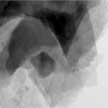 Single- or few-layer black phosphorus (BP) is one of the most promising two-dimensional semiconductors for electronic and optoelectronic device applications but its environmental instability has always posed a major hurdle for BP-based devices. In contrast, black phosphorus analogues (BPA) nanoarchitectures not only own the similar folded structure of BP, its tunable bandgap energy band and high carrier mobility, but exhibit excellent environmental stability as well. BPA nanosheets can be fabricated by a facile liquid-phase exfoliation method.
Single- or few-layer black phosphorus (BP) is one of the most promising two-dimensional semiconductors for electronic and optoelectronic device applications but its environmental instability has always posed a major hurdle for BP-based devices. In contrast, black phosphorus analogues (BPA) nanoarchitectures not only own the similar folded structure of BP, its tunable bandgap energy band and high carrier mobility, but exhibit excellent environmental stability as well. BPA nanosheets can be fabricated by a facile liquid-phase exfoliation method.
Mar 14th, 2018
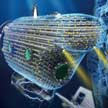 Due to its fascinating properties, black phosphorus (BP) has demonstrated appealing potential for not only building (opto)electronic devices, but also in many other areas such as lithium-ion batteries, solar cells, sensors, thermoelectric devices, supercapacitors, and phototherapy. Researchers now have demonstrated that modifying BP with metal ions solved its previous instability problem, which hindered the practical application of BP in electronics and optoelectronics; while at the same time further enhancing the original superior transport properties.
Due to its fascinating properties, black phosphorus (BP) has demonstrated appealing potential for not only building (opto)electronic devices, but also in many other areas such as lithium-ion batteries, solar cells, sensors, thermoelectric devices, supercapacitors, and phototherapy. Researchers now have demonstrated that modifying BP with metal ions solved its previous instability problem, which hindered the practical application of BP in electronics and optoelectronics; while at the same time further enhancing the original superior transport properties.
Mar 7th, 2018
 Carbon nanomaterials, including graphene-based materials, are widely gaining popularity in practical applications of nanomanufacturing. As a result, it becomes more and more likely that the unwanted introduction of such materials into the environment may occur. In particular, aqueous habitats might be severely affected by any accidental carbon nanomaterials exposure. Researching these potential environmental toxicity effects, scientists have found that kaolin, a cheap and abundant clay, can act as a powerful antidote to remediate the toxic effects of graphene oxide.
Carbon nanomaterials, including graphene-based materials, are widely gaining popularity in practical applications of nanomanufacturing. As a result, it becomes more and more likely that the unwanted introduction of such materials into the environment may occur. In particular, aqueous habitats might be severely affected by any accidental carbon nanomaterials exposure. Researching these potential environmental toxicity effects, scientists have found that kaolin, a cheap and abundant clay, can act as a powerful antidote to remediate the toxic effects of graphene oxide.
 Subscribe to our Nanotechnology Spotlight feed
Subscribe to our Nanotechnology Spotlight feed





